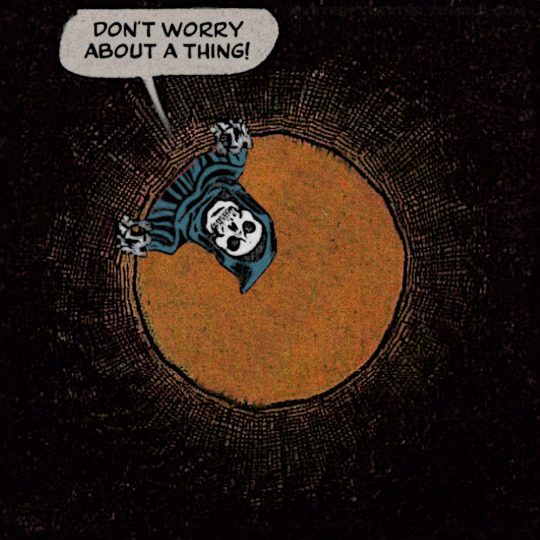Text
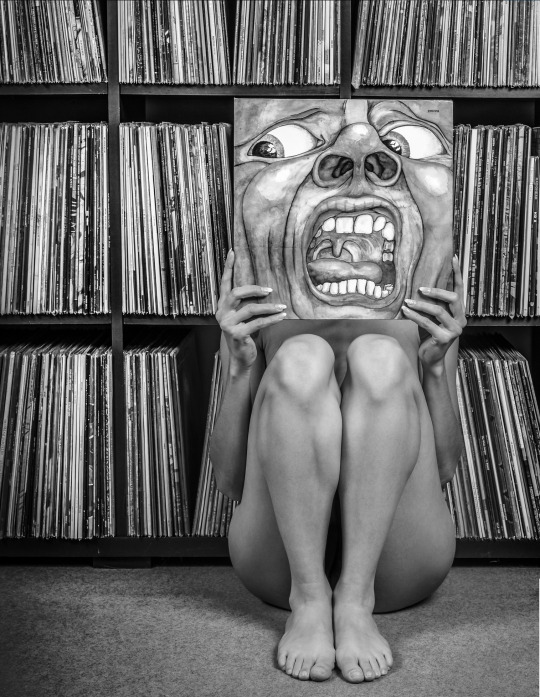
Frédéric Bousquet - flickr - December 11, 2017
3 notes
·
View notes
Text


Larry Jens Anderson (American, 1947-2021) - The Twins
Larry Jens Anderson (American, 1947-2021) - Pepper & Salt

Oscar Jespers (Belgian, 1887-1970) - Rabbit - white stone - 75 x 35 x 23 cm - 1918
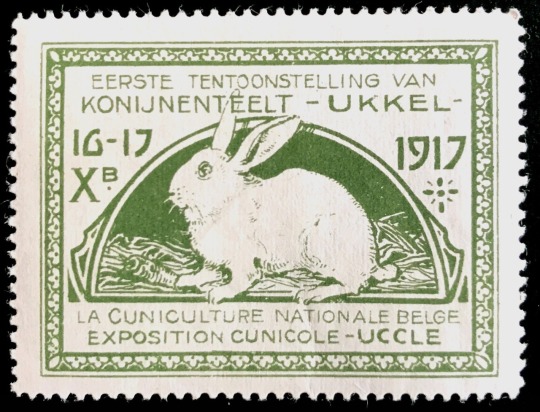
commemorative postage stamp - Belgian National Rabbit Breeding Rabbit Exhibition - 1917
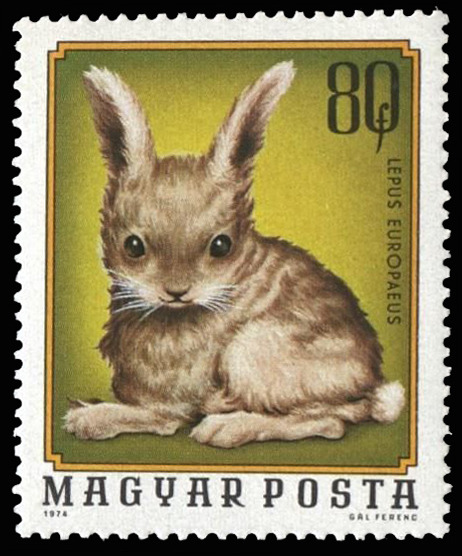
Lepus Europaeus (European Hare) - Hungarian postage stamp - 1974
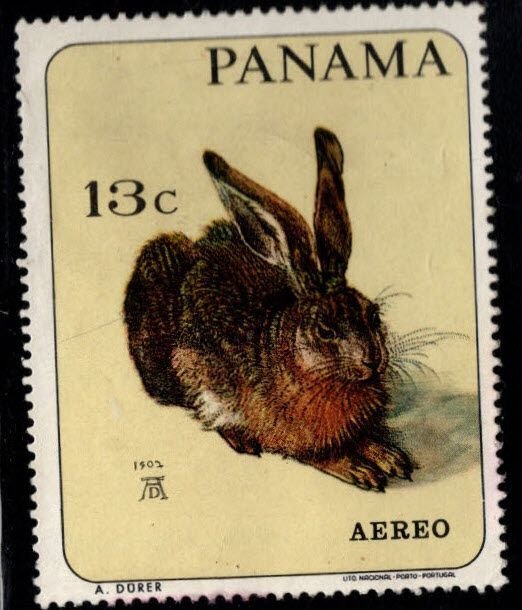
Albrecht Dürer's European Hare - Panama postage stamp - 1967
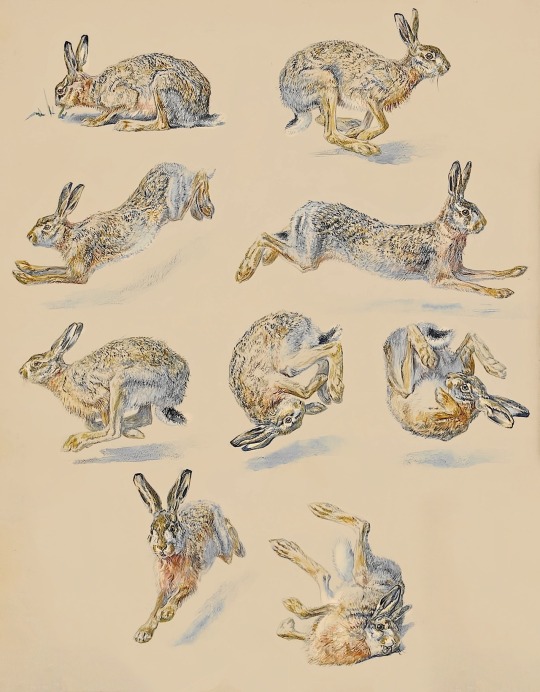
Bruno Liljefors (Swedish, 1860-1939) - Hare studies - 1885
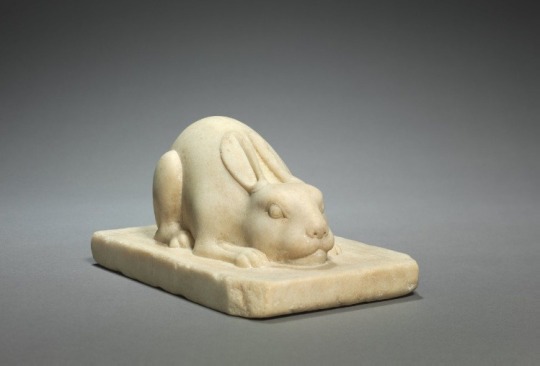
Hare - marble - 3¼"x 4½"x 8" - Northern China - Tang Dynasty (618-907 CE) - early 700s

Jürgen Lingl (German, b.1971, working in France) - Hare - wood
6 notes
·
View notes
Text
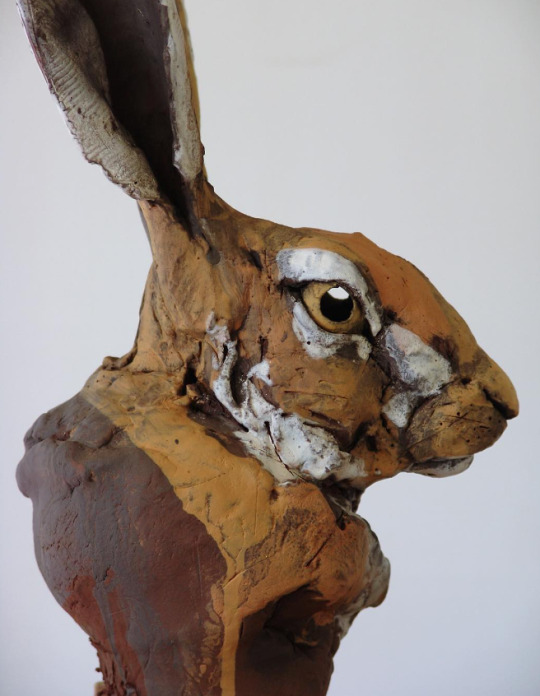




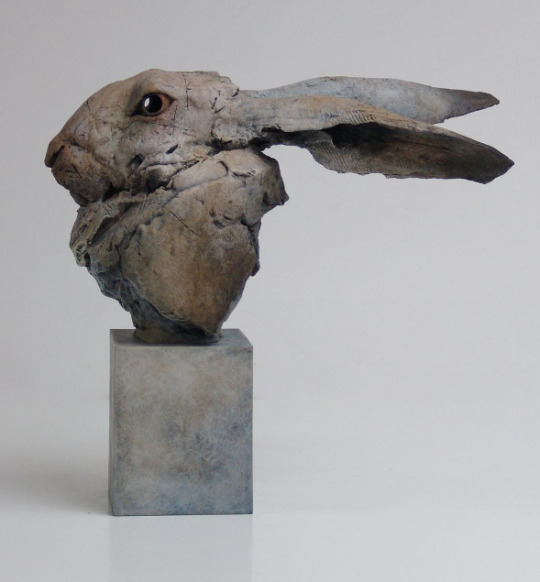
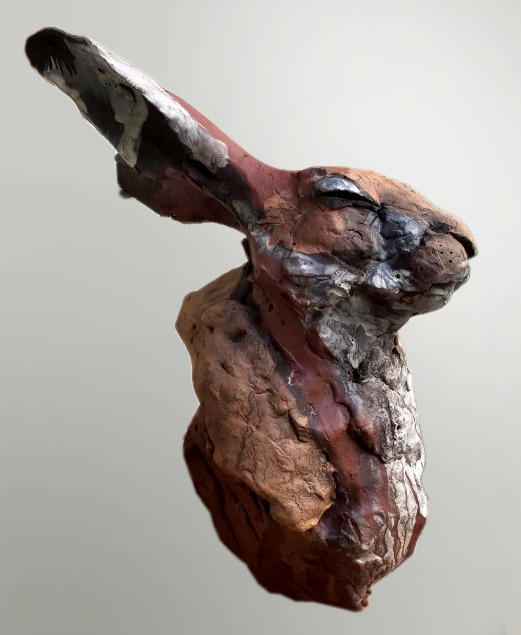
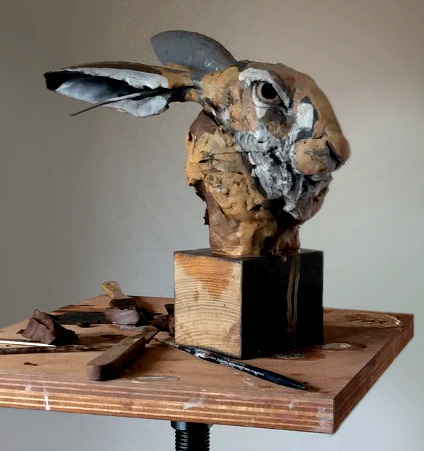

Nichola Theakston (British, b.1967)
www.instagram.com/nicholatheakstonsculpture
21 notes
·
View notes
Text

Shelley Fabares - Girl Happy - 1965
17 notes
·
View notes
Text

Switzerland has issued a stamp that celebrates concrete, and it has been printed using cement pigments.
8 notes
·
View notes
Text


" . . . a good thrashing!" — Gourmet Night — season one, episode 5
The cast of Fawlty Towers, with a couple of notable guests.
top row: Connie Booth (Polly), John Cleese (Basil), Prunella Scales (Sybil), Andrew Sachs (Manuel)
bottom row: Joan Sanderson (guest Mrs. Richards), Geoffrey Palmer (guest Dr. Price), Ballard Berkeley (permanent resident Major)
First episode of Season One aired September 19, 1975 - second season aired in 1979. Six episodes in each season.
Inept and manic English hotel owner and manager, Basil Fawlty, isn't cut out for his job. He's intolerant, rude and paranoid. All hell frequently breaks loose as Basil tries to run the hotel, constantly under verbal attack (and sometime physical) from his unhelpful wife Sybil, and hindered by the incompetent, but easy target, Manuel, their Spanish waiter.

The Fawlty Towers hotel sign has its letters missing, or scrambled up to make new words. The sign presents a different error with each episode. This image was for The Anniversary — season two, episode 11.
The writers were John Cleese and Connie Booth.
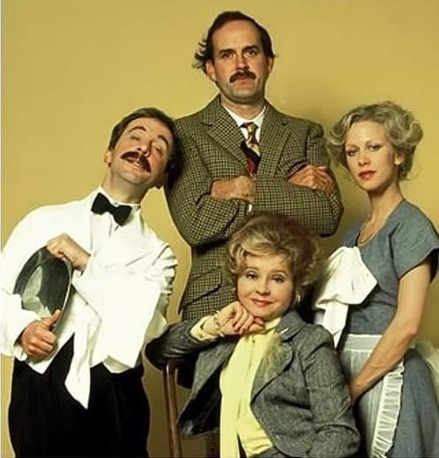

1 note
·
View note
Text



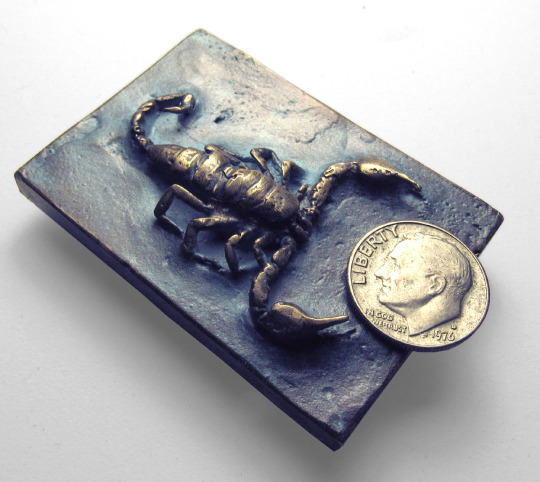
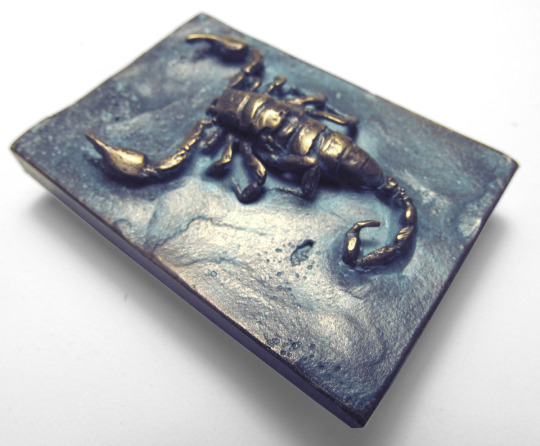


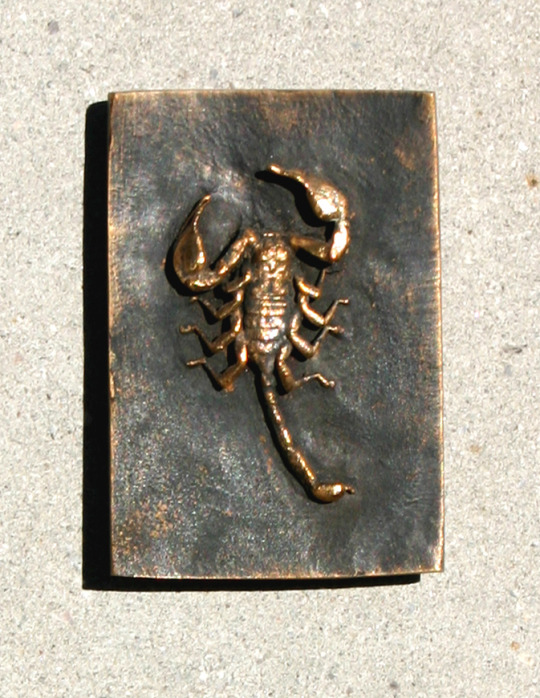
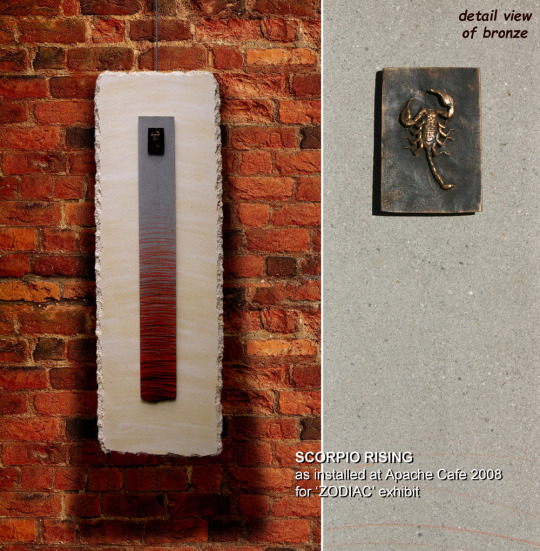


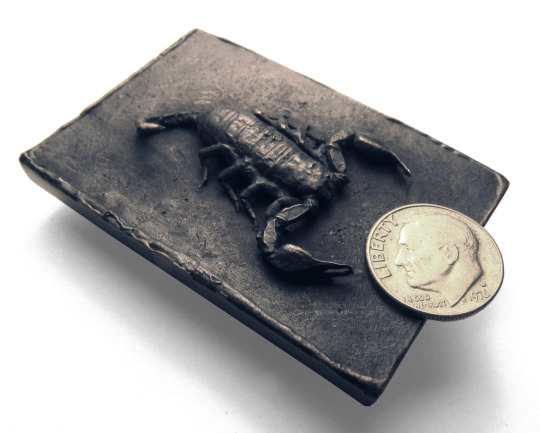
SCORPIONE (three views) - cast silver - natural tarnish patina - 1¼″x ¾″x ⅜″ - 1991 - new photos
SCORPIONE (three views) - cast bronze - potassium sulfide patina - 2¼″x 1½”x ½” - 2005 - new photos
SCORPIO RISING (two views) - cast bronze, sandstone, charcoal and crayon - 34"x 4½"x 1¼" - 2005 - old photos
SCORPIO RISING - as installed in Zodiac exhibit in 2008 - old photo
DUSTBUNNY MAMMA (three views) - cast bronze - burnt cupric nitrate patina - 2⅝″x 1⅝″x ⅝″ - 2005 - new photos
When I work in Italy I come across quite a few scorpione . . . they like to shelter under the blocks of marble I carve. The first one I came across in the summer of 1991 was under a stone I later carved into a sculpture. I caught it in a plastic cup and put it in the freezer for a couple of days to kill it without damaging the body because I was planning on casting it in metal. After two days in the freezer I took it out and using tweezers and a hot needle I arranged the legs and joined them with tiny wax rods to ensure the molten metal would fill them completely. However after about an hour working on this wax the scorpion thawed out enough to start snapping her pincers and twitching her legs which she couldn't move much because of the wax. I put her back in the freezer where I left her a whole week to become a full corpse. When I removed her I finished attaching the wax rods to the tips of the pincers and a sprue to her belly and invested her in a jewelry mold. That summer the jewelry and metalsmithing class shared the studio space with the sculpture classes, so I purchased some silver and cast the scorpion in the centrifuge which insured the mold filled completely without any bubbles. After the cast was removed from the investment I trimmed the connecting 'wax' channels away with a pneumatic pencil grinder I had brought with me (my commonly reached-for Dremel grinder would not work with the 240V power in Italy).
In following years I came across many more scorpions in the stonepile, but I'd just let them be — although I always wore my leather work-gloves when moving blocks of stone. The others which I cast were not caught out in the stonepile. They were encountered on different Autumn mornings in the house — under the bed just after I awoke and was reaching for my shoes. The bedroom in the house was on the third floor, and I never saw scorpions on the lower floors (kitchen and dining rooms) or on the stairs. The scorpions on the tile floor would take a bit of time to catch as they are nimble and skitter around, but the biggest one got tangled in a dustbunny and was a bit easier to capture.
Being born under the sign of Scorpio it seemed only fitting that these confrontations with my ‘cousins’ should be remembered in Italian bronze — especially as this year the jewelry and metalsmithing class was not offered. Since no centrifugal casting to prevent bubbles could be used, the process for casting the scorpions had to be changed. When the scorpions came out of the freezer they were all attached to thin (1/4-inch or less) slabs of wax with hot tools by the abdomen and each leg was carefully melted into place, the pincers and tail were connected to tiny wax 'vents' to allow the gas bubbles to escape. When placed in the mold the scorpion would be upside down with the wax slab above it so the weight of the molten bronze would force the metal to fill the mold into the tiny legs, pincers, and tail. Even so, the casting of one of the smaller male scorpions (potassium sulfide patina) is slightly marred by a couple of bubbles on his back. He was cast in the first bronze pour of the semester, while the slightly larger/heavier female casting came out exceptionally well with no flaws from the last pour of the semester.
That Autumn one of the male castings was incorporated into a wall sculpture titled SCORPIO RISING, with the bronze casting attached to a thin slab of the local sandstone upon which I had scribbled strokes of red lumber crayon and compressed stick charcoal. It was shown in the Cortona Exhibit in Palazzo Casali at semester's end, and then when shipped back to the States it was shown again in an Atlanta nightclub which hosted an exhibit themed The Zodiac.
The other scorpione are in my bedroom again — not under the bed this time, but hanging on the wall. I just call the large one Dustbunny Mamma. Of note, the burnt cupric nitrate patina on her has darkened over the almost twenty years, while the potassium sulfide patinas are almost unchanged.
------------------------------------------------------------------------------
It appears to me that all the scorpions I've encountered in Tuscany are the species Euscorpius concinnus, and their sting is only mildly venomous — like a bee or wasp sting — unless one is allergic. Due to the shape of their bodies I believe the narrower-bodied scorpions (potassium sulphide patinas) were male while the more-rounded-bodied examples were female (silver and the burnt cupric nitrate patina).
6 notes
·
View notes
Text

DREAMS STERLING - silver-leafed stoneware

ANISE - dyed stoneware

BELLA MACCHINA - leafed plaster with verdigris patina

MAUD MODIFIED - W.I.P. - painted plaster
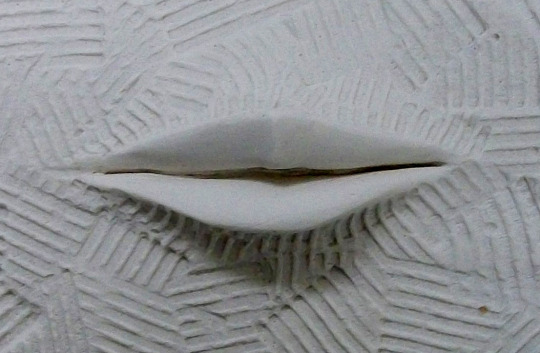

2017 SUMMER LIPS (two views) - raw plaster & with bronze patina

I FEEL IT - stained white stoneware
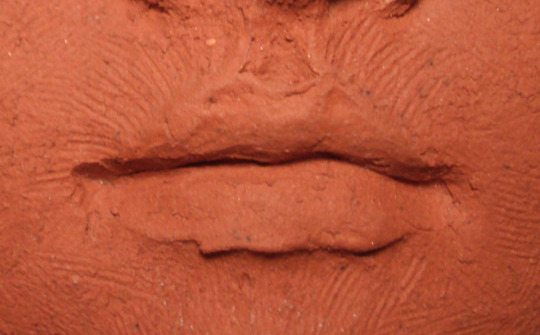
NEDERLANDISH - unglazed Lizella earthenware
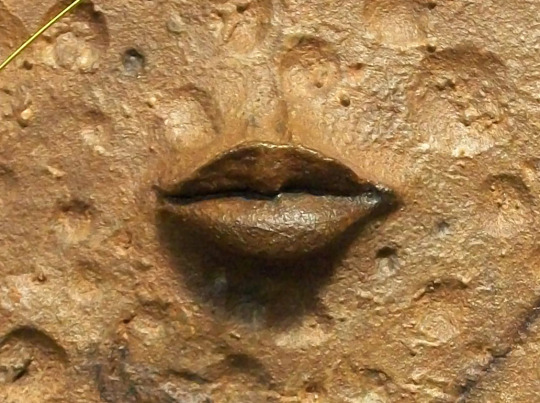
SELE'NE: WARM NIGHT SEA - plaster, metallic paint with patina

KHALIAH - shoe polished Lizella earthenware

BLUE SATE #2 - bronze powdered plaster with patina
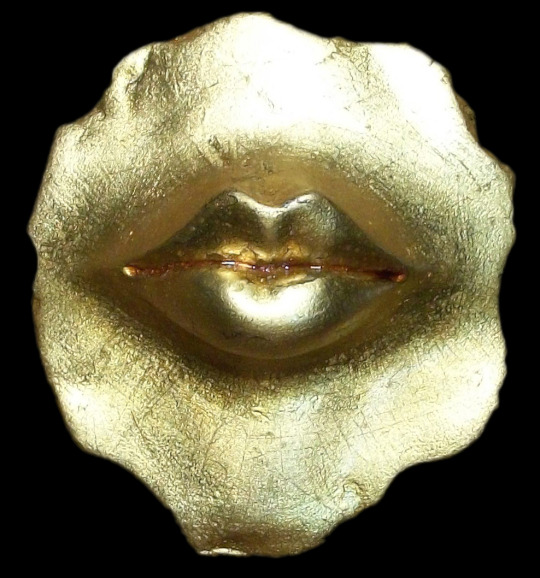
LITTLE PUCKER - gold-leafed resin casting

SIGHS IN THE WIND - cast paper, stained
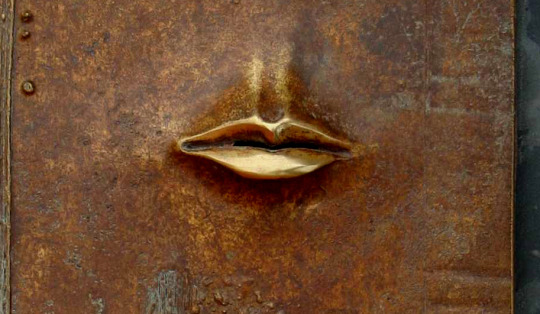
DAUGHTER OF CHAOS - cast bronze, liver of sulphur patina

JUNGLE RED - frit cast glass
Some detail views of various lip sculptures in different materials, different finishes — all shown except BLUE SATE are generally life-size, though I FEEL IT, NEDERLANDISH, and LITTLE PUCKER are child-size mouths.
#sculpture#my artwork#don dougan#art by me#wall sculpture#lips#bronze#plaster#paper#resin casting#ceramic#glass
13 notes
·
View notes
Text
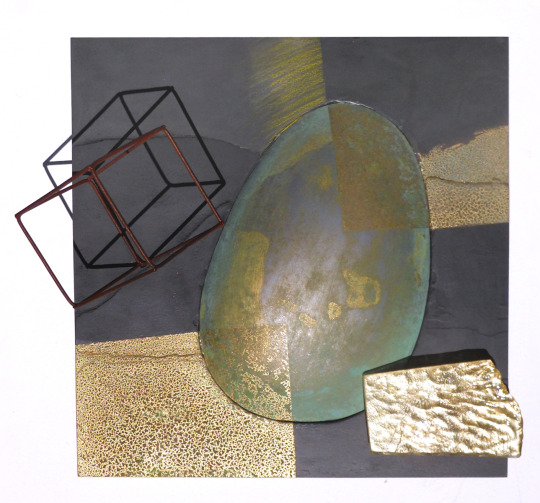

Bump in the Night (Early January)
Connemara slate, found object, schlag metal leafing with verdigris patina, rippled glass with leafing, painted steel wire found object, colored pencil
11⅞"x 13½"x 5½"
For forty-six years we've lived in a house on the outside curve of the road and over that time we've had over a dozen car wrecks in the front yard. Most of the collisions are hit and run, with the vehicle leaving before we can even get to the window and see what caused the noise. This piece began one morning early in the year with finding a broken object and shards of mirror in the slightly torn-up grass by the utility pole at the end of the driveway — small evidence of the most recent bump in the night.
2 notes
·
View notes
Text
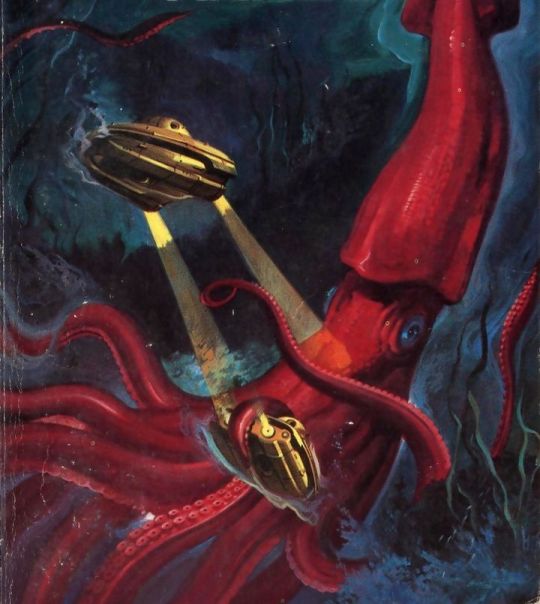

cover art to 'The Deep Range' by Arthur C. Clarke - uncredited in the 1981 publication - illegible signature in the bottom right corner
1 note
·
View note
Text

Coco de Mer
In centuries past the Coco de Mer (Lodoicea maldivica) was known only from empty or rotted pods that had floated across the waters from the then-uninhabited Seychelles Islands, located in the Indian Ocean northeast of Madagascar.
The coconuts falling from the trees which ended up in the sea would usually be carried eastwards by the prevailing sea currents to the Maldives (whence their name). As the un-germinated nuts are heavier than water they cannot float, so the species habitat is limited to their native islands.
On the tree, the coconut is a giant green orb, but inside, with the outer husk removed, it closely resembles a pair of female human buttocks. Because of this resemblance one of the archaic botanical names was Lodoicea callipyge, in which callipyge is from Greek words meaning ‘beautiful buttocks’. In modern Seychelles creole, the fruit is called 'coco fesse’ — which crudely translates as 'butt nut’. Because of their unique shape and size (the largest nut in the world) the shells of these nuts have been prized by many cultures for centuries, and the species habitat is now part of a world heritage site and the sale and harvesting of the nuts is carefully monitored.
The nut can weigh up to 45 lbs., it takes two years to germinate, and seven years from the fertilization of the female fruit until their maturity. The trees can grow to be either male of female, and the female tree can bear fruit for the first time when it is about twenty-five years old, though it takes about one-hundred years for the female palm to reach her full mature height of 100 feet or so. The male trees grow about twenty-five percent taller.
10 notes
·
View notes
Text

Sombrero Galaxy - infrared
7 notes
·
View notes
Text

the other Planet of the Apes
5 notes
·
View notes
Text

Spider
Colima zoomorphic vessel - ceramic - 200 BCE-600 CE
80 notes
·
View notes
Text

Aurora Borealis on Saturn
from the Hubble Space Telescope
206 notes
·
View notes
Text
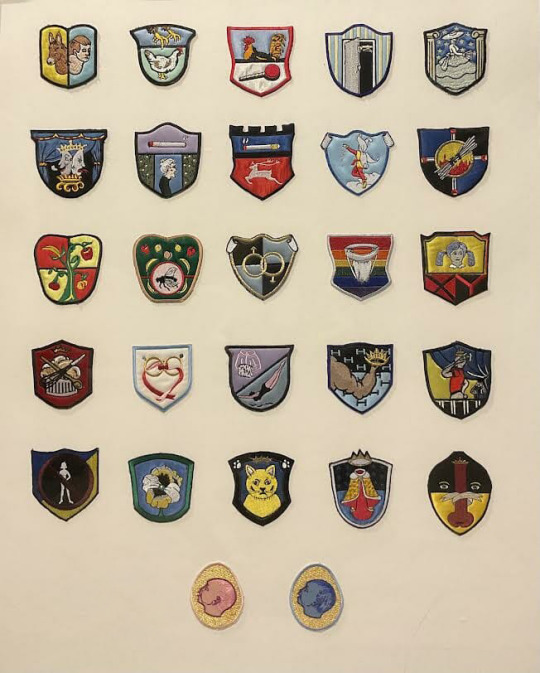
Larry Anderson (American, 1947-2021)
GAY MERIT BADGES - embroidered fabric - 2005-2006
Watched Larry paint the original designs (about 14" x 12" on plywood) over a period of weeks, before he took them down to the embroidery shop in Camucia (down the hill from Cortona) to have them made into patches. Had a chance to buy the set within weeks after they were made (for a really good price), but I was flat broke when we were heading back to the States, and told Larry I'd buy them later — but I never got (I should write made) the chance. We installed the Cortona show together in 2005. Larry was a great person whom I wish had seen more often.

12 notes
·
View notes
